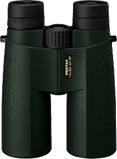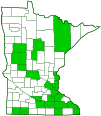American bullfrog
(Lithobates catesbeianus)
Conservation • Description • Habitat • Ecology • Distribution • Taxonomy
Conservation Status |
|||
| IUCN Red List | LC - Least Concern |
||
| NatureServe | N5 - Secure S4 - Apparently Secure |
||
| Minnesota | not listed |
||
Description
Size
Total length: 4″ to 6¾″ (10 to X cm)
Voice
ARMI - Frog and Toad Calls
A deep low note, usually described as a “rrum”, repeated once a second five or more times, the last two or three times stuttered. The calls can be heard up to a quarter mile away from early June through July.
Similar Species
Habitat
Warm, still, permanent bodies of water, including lakes, ponds, and river oxbows and backwaters
Ecology
Behavior
Lifespan
7 to 9 years
Life Cycle
Tadpole Food
Algae, plant tissue, organic debris
Adult Food
Adult and larval insects, spiders, slugs, snails, fish, turtles, small birds, small snakes, rodents, smaller frogs—any animal that can fit in its mouth.
Distribution |
||
|
Sources 6, 7, 14, 24, 29, 30, 73, 76, 78. Biodiversity occurrence data published by: Minnesota Biodiversity Atlas (accessed through the Minnesota Biodiversity Atlas Portal, bellatlas.umn.edu, 11/21/2025). |
|
| 11/21/2025 | ||
Occurrence |
||
Widespread and abundant in eastern United States. |
||
Taxonomy
Class
Amphibia (amphibians)
Subclass
Lissamphibia (modern amphibians)
Superorder
Batrachia (amphibians)
Order
Anura (frogs and toads)
Suborder
Neobatrachia
Superfamily
Ranoidea
Family
Ranidae (typical frogs)
Genus
Lithobates (American water frogs)
Genus
In 2006, Frost et al. transferred most North American true frogs from the genus Rana to Lithobates, a controversial decision initially met with resistance. While Stuart, Pauly et al., and other systematic reviews rejected the change in 2008 and 2009, the transfer has since gained near-universal acceptance by 2024. Amphibian Research and Monitoring Initiative (ARMI), GBIF, NatureServe, and iNaturalist all use the name Lithobates catesbeianus.
In 2016, a consortium of Rana researchers from Europe, Asia, and North America showed that transferring the species to Lithobates caused problems of paraphyly in other genera. In that same year, Yuan et al. returned all North American true frogs to the genus Rana, using subgenera for all of the well-defined species groups within Rana. AmphibiaWeb uses the name Rana catesbeiana.
A recent article (Dubois, Alain et al., 2021) proposed a new “phylogenetic taxonomy and nomenclature” of extant amphibians (subclass Lissamphibia). In the proposed taxonomy, the subgenus Aquarana is raised to full species rank, and Lithobates catesbeianus becomes Aquarana catesbeiana. Amphibian Species of the World, ITIS, NCBI, Catalog of Life, and UniProt use the name Aquarana catesbeiana.
Subordinate Taxa
Synonyms
Aquarana catesbeiana
Lithobates catesbiana
Rana catesbeiana
Rana mugiens
Rana scapularis
Common Names
American bullfrog
bullfrog
common bullfrog
Visitor Photos
Share your photo of this amphibian.
This button not working for you?
Simply email us at info@MinnesotaSeasons.com.
Attach one or more photos and, if you like, a caption.
Jeff LeClere |
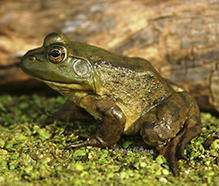 |
MinnesotaSeasons.com Photos
|
|
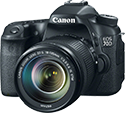
Slideshows
Bull Frog (Rana catesbeiana)
Andree Reno Sanborn
Rana catesbeiana (Bullfrog)
Allen Chartier
Lithobates catesbeiana (American Bullfrog)
John Clare
American Bullfrog
Emily Froese
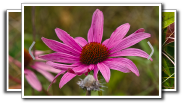
Visitor Videos
Share your video of this amphibian.
This button not working for you?
Simply email us at info@MinnesotaSeasons.com.
Attach a video, a YouTube link, or a cloud storage link.
Other Videos
Bull Frog Calling - Rana catesbeiana
Reptile and Amphibian Video
Massive Adult Male American Bullfrog ( Rana Catesbeiana , Lithobates Catesbeiannus )
bufothetoad1
American Bullfrog (Lithobates catesbeianus)
WisCBMnetwork
Huge Hand-Caught Bullfrog!
Northwest Herper
Bullfrog Hunts...Anything!
National Geographic

Visitor Sightings
Report a sighting of this amphibian.
This button not working for you?
Simply email us at info@MinnesotaSeasons.com.
Be sure to include a location.
MinnesotaSeasons.com Sightings
